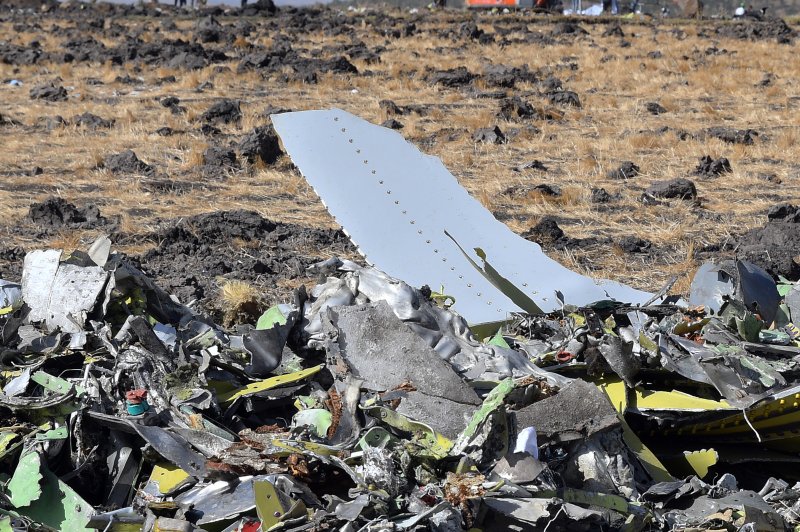Flight recorder data from the Ethiopian Airlines Boeing 737 Max 8 crash showed "clear similarities" to a Lion Air crash involving the same model of plane in October, Ethiopia's transport minister said Sunday. Photo by EPA
March 17 (UPI) -- The Ethiopian Airlines Boeing 737 Max 8 crash last week showed "clear similarities" to a Lion Air crash involving the same model of plane in October, Ethiopia's transport minister said Sunday.
Transport Minister Dagmawit Moges said the condition of the so-called "black boxes" was good, providing enough data to draw a comparison to the Lion Air flight last year in Indonesia.
"During the investigation of the FDR [flight data recorder] clear similarities were noted between Ethiopian Airlines Flight 302 and Indonesian Lion Air Flight 610, which will be subject of further investigation," Moges said.
Ethiopia's Accident Investigation Bureau will release a preliminary report on what happened to Flight 302 in 30 days, she added.
The data showed an erratic flight path during the six minutes that the plane was in the air before it crashed on March 10, killing all 157 people aboard. According to the data, the plane ascended and descended and then ascended again, while traveling at speeds exceeding normal takeoff procedure.
A preliminary report about the causes of the Lion Air crash released in November showed the Boeing maneuvering characteristics augmentation system pushed the nose of the plane down, forcing the pilots to pull the nose back up more than a dozen times throughout the 11-minute flight.
On Saturday, investigators probing the Ethiopian Airlines flight found a device called a jackscrew, which controls the angle of the plane's horizontal stabilizers, in the upward position, which would have forced the nose of the plane down.
Although there are other reasons for stabilizers to be in the upward position, the device can be triggered by the automated system that is the same in question as the Lion Air crash.
The voice and data recorders from the Ethiopian Airlines flight are being analyzed in France by the Bureau of Enquiry and Analysis for Civil Aviation Safety. Moges said the U.S. National Transportation Safety Board was also involved.
The Seattle Times reported Sunday that the Federal Aviation Administration delegated much of the safety assessment of the flight control software in question to Boeing during the 737 Max's certification process.
Engineers interviewed by the paper said Boeing's System Safety Analysis understated the power of the system and the analysis also failed to account for how the system could reset itself each time a pilot responded.
Since the Ethiopian Airlines crash, multiple countries including the United States have grounded all Boeing 737 Max 8 planes over concerns about the safety of the aircraft.















